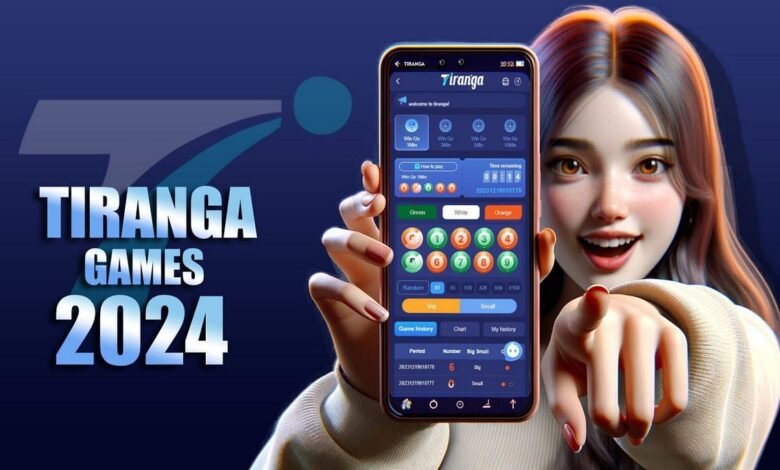How the Tiranga Game Can Enhance Team Building and Leadership Skills
How the Tiranga Game Can Enhance

Team building and leadership development are crucial components of a successful organization. Effective teamwork and strong leadership not only improve productivity but also foster a positive work environment. One innovative way to enhance these skills is through interactive and educational activities like the Tiranga Game. Originally designed to celebrate national pride and heritage, the Tiranga Game has proven to be a valuable tool for developing team building and leadership skills. This article explores how the Tiranga Game can be utilized to foster collaboration, improve communication, and strengthen leadership abilities.
Overview of the Tiranga Game
What is the Tiranga Game?
The Tiranga Game is an interactive activity centered around the Indian national flag, also known as the “Tiranga.” The game involves various challenges and tasks that are themed around the colors, symbols, and history of the flag. These activities range from trivia quizzes and puzzles to creative projects and team-based tasks. The goal is to educate participants about the significance of the national flag while engaging them in a fun and interactive way.
Purpose and Design
While the primary aim of the Tiranga Game is to promote national pride and cultural awareness, its design elements make it a versatile tool for team building and leadership development. By incorporating collaborative tasks and problem-solving challenges, the game encourages participants to work together and demonstrate leadership qualities. The game’s structure can be easily adapted to suit different organizational needs and objectives.
Enhancing Team Building Skills
Promoting Collaboration
One of the key aspects of team building is fostering collaboration among team members. The Tiranga Game is designed to require teamwork, which naturally promotes collaboration. Activities such as team trivia contests, group puzzles, and collaborative creative projects require participants to communicate effectively, share ideas, and work towards common goals.
In a team-based version of the game, participants are divided into groups and tasked with completing various challenges related to the national flag. Each challenge requires input from all group members, encouraging them to leverage each other’s strengths and skills. This collaborative approach helps build trust and improve interpersonal relationships within the team.
Improving Communication
Effective communication is essential for successful teamwork, and the Tiranga Game provides a platform for practicing and improving these skills. During the game, participants must discuss strategies, share information, and provide feedback to one another. These interactions help to enhance verbal and non-verbal communication skills, ensuring that team members are able to convey their thoughts clearly and listen actively.
For example, in a trivia challenge, team members need to discuss and agree on answers, which fosters open dialogue and encourages active listening. In creative tasks, such as designing a flag or creating a themed presentation, teams must collaborate and negotiate ideas, further developing their communication skills.
Encouraging Problem-Solving
Problem-solving is a critical component of effective teamwork, and the Tiranga Game incorporates various problem-solving tasks that challenge participants to think critically and creatively. These tasks may include solving puzzles, strategizing solutions, or completing challenges under time constraints.
By working together to address these problems, team members develop their ability to analyze situations, generate solutions, and implement strategies. This collaborative problem-solving experience helps teams become more adept at tackling challenges and finding innovative solutions in their work environment.
Developing Leadership Skills
Leading by Example
The Tiranga Game offers opportunities for participants to demonstrate and develop leadership skills. In team-based activities, individuals often take on leadership roles, guiding their team through challenges and making strategic decisions. Effective leaders in the game lead by example, showing enthusiasm, commitment, and a positive attitude.
Leaders are responsible for motivating their team, coordinating tasks, and ensuring that everyone is contributing to the group’s objectives. By taking on these roles, participants gain valuable experience in leading a team and managing group dynamics, which can be applied to their professional roles.
Delegating and Managing
Effective delegation and management are essential leadership skills, and the Tiranga Game provides a practical context for practicing these abilities. Leaders in the game must delegate tasks to team members based on their strengths and expertise. This requires an understanding of each team member’s skills and the ability to assign tasks effectively.
Managing a team during the game involves overseeing progress, addressing challenges, and ensuring that the team stays focused on their goals. Leaders must balance the needs of the team with the demands of the game, making decisions that will help their team succeed.
Building Team Morale
Leadership also involves maintaining team morale and motivation. The Tiranga Game’s engaging and enjoyable nature helps to boost team morale, creating a positive and supportive environment. Leaders who can effectively maintain high morale and motivate their team are more likely to achieve successful outcomes.
In the game, leaders play a crucial role in keeping their team motivated and focused. By celebrating successes, providing encouragement, and addressing any issues that arise, leaders help to foster a sense of camaraderie and enthusiasm within the team.
Implementing the Tiranga Game in a Corporate Setting
Customizing the Game
To maximize the benefits of the Tiranga Game for team building and leadership development, it is important to customize the game to fit the specific needs and objectives of your organization. This might involve tailoring challenges to reflect your company’s values or integrating scenarios that are relevant to your industry.
Customization can also include adapting the game’s difficulty level and format to suit different team sizes and skill levels. By aligning the game with your organizational goals, you can ensure that it effectively addresses your team building and leadership development needs.
Organizing the Event
Organizing a Tiranga Game event requires careful planning and coordination. Consider factors such as the venue, timing, and logistics to ensure that the event runs smoothly. It is also important to communicate the purpose and objectives of the game to participants, so they understand its relevance to team building and leadership development.
Providing clear instructions, setting up necessary equipment, and facilitating the game are key aspects of successful event organization. By creating a well-structured and enjoyable experience, you can maximize the benefits of the Tiranga Game for your team.
Conclusion
The Tiranga Game offers a unique and effective way to enhance team building and leadership skills. By promoting collaboration, improving communication, and encouraging problem-solving, the game helps teams develop the essential skills needed for success. Additionally, the game provides opportunities for individuals to demonstrate and develop leadership qualities, such as leading by example, delegating tasks, and maintaining team morale.
By incorporating the Tiranga Game into team-building activities and leadership development programs, organizations can create engaging and meaningful experiences that foster teamwork and leadership. Its versatility and adaptability make it a valuable tool for achieving organizational goals and enhancing the skills of team members and leaders alike. As organizations continue to seek innovative ways to build strong, effective teams, the Tiranga Game stands out as a powerful and enjoyable option for achieving these objectives.



